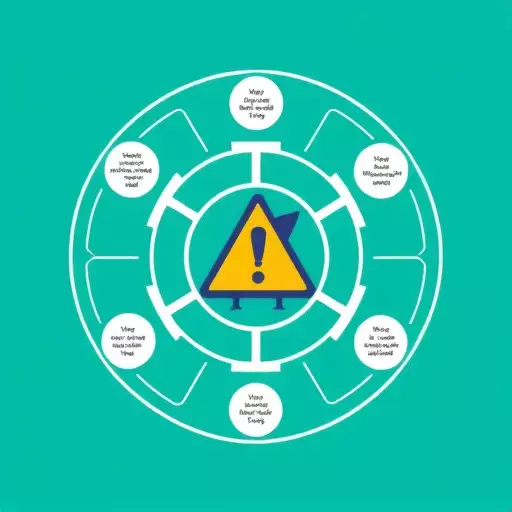In process safety management consulting, Management of Change (MOC) is vital for controlling and assessing process modifications, preventing new hazards, and mitigating risks. Hazard identification techniques, especially Process Hazard Analysis (PHA), are key tools to navigate complex industrial changes, uncover hidden risks, and ensure proactive safety measures. Case studies demonstrate the practical application of MOC in diverse industries, focusing on employee training, communication, risk assessments, and change management plans to enhance process safety and efficiency.
Management of Change (MOC) is a vital component of successful Process Safety Management (PSM) consulting. As industries navigate complex processes, effective MOC ensures smooth transitions during process modifications, minimizing risks and maximizing efficiency. This article delves into the critical role of MOC in PSM, exploring key strategies like Hazard Identification Techniques and Process Hazard Analysis (PHA). We’ll discuss implementing MOC strategies for optimal process optimization and present real-world case studies showcasing its practical applications across diverse industrial sectors.
- Understanding Management of Change (MOC): Its Relevance in Process Safety Management Consulting
- Hazard Identification Techniques: A Foundation for Effective MOC in PSM
- Process Hazard Analysis (PHA): Unlocking Comprehensive Risk Assessment for Change Implementation
- Implementing MOC Strategies: Ensuring Smooth Transitions and Process Optimization
- Case Studies: Real-World Applications of MOC in Various Industrial Scenarios
Understanding Management of Change (MOC): Its Relevance in Process Safety Management Consulting

Management of Change (MOC) is a critical aspect of Process Safety Management Consulting, especially when conducting Process Hazard Analysis (PHA). It involves systematically planning, implementing, and controlling changes within industrial processes to ensure safety and mitigate risks. Given the dynamic nature of industries and continuous process improvements, MOC becomes indispensable in ensuring that changes do not introduce new hazards or exacerbate existing ones.
In PHA, understanding MOC is vital as it helps in identifying potential hazards through change assessment. Effective MOC procedures enable consultants to evaluate how modifications to processes, equipment, or operations might impact the overall safety of a facility. By employing robust hazard identification techniques and thoroughly analysing changes, consultants can predict and address potential risks, thereby enhancing process safety and compliance with relevant regulations.
Hazard Identification Techniques: A Foundation for Effective MOC in PSM

In the realm of Process Safety Management (PSM), Hazard Identification Techniques form the bedrock for successful Management of Change (MOC). These techniques, such as Process Hazard Analysis (PHA), are vital tools that enable consultants to navigate the complex landscape of industrial processes and identify potential risks. By employing comprehensive methods, PSM consultants can unearth hidden hazards that might otherwise go unnoticed, ensuring a robust foundation for effective MOC strategies.
A meticulous PHA involves a systematic review and evaluation of a process, considering various factors like equipment failures, human errors, and external events. This analytical approach allows for the early detection of significant hazards, enabling proactive risk mitigation measures. Ultimately, these techniques empower PSM consultants to make informed decisions, enhance process safety, and foster a culture of continuous improvement within industrial settings.
Process Hazard Analysis (PHA): Unlocking Comprehensive Risk Assessment for Change Implementation

Process Hazard Analysis (PHA) serves as a powerful tool within Process Safety Management (PSM), offering a comprehensive approach to risk assessment during change implementation. This methodical process involves identifying and evaluating potential hazards associated with modifications to chemical processes, facilities, or operations. By employing various hazard identification techniques, such as fault tree analysis and event tree analysis, PSM consultants can uncover hidden risks that might otherwise be overlooked.
PHA provides a structured framework to analyze the consequences of deviations from normal operating conditions, ensuring that safety measures are robust and aligned with the specific change proposed. This proactive risk management strategy enables organizations to make informed decisions, implement effective controls, and ultimately mitigate the potential impact of changes on process safety, thereby enhancing overall operational resilience.
Implementing MOC Strategies: Ensuring Smooth Transitions and Process Optimization

Implementing Management of Change (MOC) strategies is a critical aspect of Process Safety Management (PSM), ensuring that organizational changes are smoothly integrated and process risks are effectively mitigated. Professional PSM consulting services play a pivotal role in guiding companies through this transition, leveraging advanced hazard identification techniques to conduct comprehensive Process Hazard Analyses (PHAs). These analyses involve meticulous assessments of existing processes, potential hazards, and their interaction with proposed modifications, allowing for the development of robust safety strategies.
By employing these methods, organizations can ensure that changes are not only implemented efficiently but also optimize process performance. MOC strategies focus on creating a structured framework for change management, including clear communication plans, comprehensive training programs, and well-defined testing protocols. This holistic approach minimizes disruptions, enhances worker understanding, and reduces the likelihood of accidental events, ultimately contributing to improved overall process safety and efficiency.
Case Studies: Real-World Applications of MOC in Various Industrial Scenarios

Case studies offer a powerful way to understand the practical application of Management of Change (MOC) in diverse industrial settings, especially within Process Safety Management (PSM). These real-world scenarios illustrate how MOC principles and techniques, such as Hazard Identification Techniques and Process Hazard Analysis (PHA), are employed to navigate complex organizational changes.
For instance, a case study might highlight the successful implementation of a new manufacturing process in a chemical plant, where a thorough PHA was conducted to identify potential hazards associated with the introduction of novel chemicals. The MOC strategy focused on employee training and communication to ensure a smooth transition, minimizing risks and maximizing operational efficiency. Similarly, another study could showcase how a healthcare organization utilized MOC to implement an electronic health record system, involving risk assessments and change management plans to address staff concerns and potential system failures.


